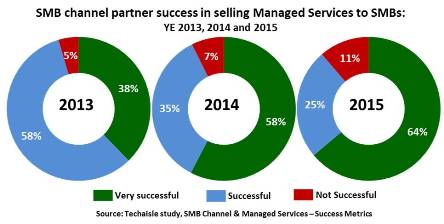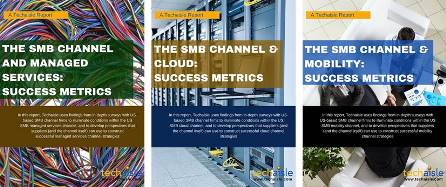Intense India Focus
Indian government's Digital India campaign is getting the attention of almost everybody in the IT industry, be it the multinationals or the local players. Sensing the vast potential, Dell started early with its governing body inaugurating the entire launch of Digital India in Delhi. Summing up his excitement, Alok Ohrie, President, Dell India said, “It is one of those campaigns which I believe is going to really position the country to a point where clearly it will continue to become stronger as an economy and would help realize the dreams of the nation with regards to it being a knowledge based economy. This is one initiative from the government that's going to really energize spend on IT and it is also going to be a big play for most of the players in the IT industry”.
Dell in India is also beyond just domestic operations. Almost all business functions that exist globally are represented in India including an R&D setup of about 2,500 engineers and PhDs. The India-based R&D unit seems to have played a big hand in the development of Dell’s 13G server technology.
Capitalizing on privatization
Immediately after privatization, Dell executives saw the potential for an accelerated pace of execution of various initiatives at a global level as well as a whole lot of flexibility and encouragement to try new go-to-market models. This agility is what Dell India needed and as per its executives “has benefited Dell India big time”. In fact, they are quick to point out that the India operations have grown a little faster than the global business, “our growth in India versus the competition is five to six times faster”.
Midmarket businesses in India are listening and are accepting Dell’s end-to-end solution story and are expecting an advisory role and a consultative approach from Dell in their engagements. Many digital commerce businesses are also looking for Dell to help them define a blueprint for future with regards to IT deployment. Being private with an end-to-end solution orientation Dell’s India sales organization is neither getting limited nor getting constrained in its alignments with customer business objectives, nudging the customers to a future ready infrastructure capable of delivering a future ready enterprise. Playing an advisory role is also forcing the sales organization to be creative in its solution design, unrestricted as it does not have any legacy to protect.
The new GTM
In early 2014, Dell India rolled out a new GTM strategy for the India market. The new GTM strategy was first piloted in India and provides customers with a choice of being with Dell, either direct or indirectly through a partner. It is a GTM model that lends itself extremely well to improving Dell India’s engagement across different customer segments. This strategy brings a change from Dell India’s direct approach in the past with Dell introducing three RTMs: 1/Dell Led for direct sales engagement, 2/ Partner Led for business accounts with special pricing and products; and 3/ Distribution Led for consumer IT products.
Within the GTM model there are three different RTMs (routes-to-market). First is the Dell-led RTM which is Dell’s direct engagement with end-customers. Some of the account managers’ training modules have been modified to help them have deeper, richer, more mature conversations with customers in the form of advisory roles and consultative approaches. However, Dell-led RTM does not mean that partners are shut out from engaging in the same account along with Dell. The partners bring complementary skill-sets to work along with Dell solution experts. Dell asserts that it is more than willing to work with a partner and hence Dell has named the RTM as Dell-led and not Dell direct.
Within the Dell-led RTM, Dell has further segregated accounts into two: one that is more of reach, development & penetration consists of Dell India’s existing accounts and where a lot is already known about the customer; and in the other are those accounts that Dell calls as activation. There are close to 2,500 accounts in Dell-led RTM which are split into four geographies - the north, south, east and west.
The second RTM is the Partner-led RTM for business accounts with special pricing and products. Apart from the 2,500 accounts, the rest of the named accounts have been identified for partners to engage with by identifying, developing and addressing the opportunities. Dell is in a support mode in these opportunities.
The third RTM is distribution-led RTM focused on consumer IT products. This RTM was developed to expand reach into customers in tier 3/4/5 cities as well as customers who are not IT savvy. Dell currently has five distributors in India and a web of local distributors to reach into remote areas of India.
Disappearing Partner Conflict
Dell is recognizing the need to erase the perception of consistent channel conflict and hopes that the three different RTMs will help. Alok Ohrie points out, “anomalies have been removed through the new GTM model and it is a very, very predictable model for the partners”.
Techaisle’s India analyst, Gitika Bajaj and Arun Mishra crisscross the entire country directly meeting with channel partners. Not every Dell channel partner is happy but from an overall perspective there is obviously tremendous momentum and Dell’s RTM has legs. Comparing Dell with its closest competitors, channel partners say that “Dell's responsiveness is impeccable when a deal is being struck at the end user level”.


















